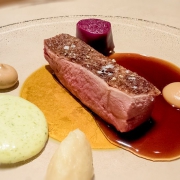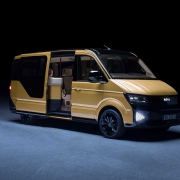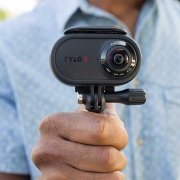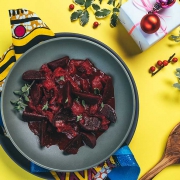The Chef of The Future Could Be a Robotic Kitchen
The Moley Robotic Kitchen is a fully integrated automated kitchen, designed for regular homes, that cooks with the skill and flair of a human chef.
On sale in 2018, the robotic kitchen will not only create a paradigm shift in the use of robots in the home, it will have a major impact on health and wellbeing: users will now be able to enjoy healthy and delicious dishes, cooked to world-class standards, at their own homes.
The Moley Robotic Kitchen: World Leading Innovation
Moley Robotics was founded in 2014 by London-based computer scientist, robotics and healthcare innovator Dr Mark Oleynik. Mark Oleynik is the CEO of the company. The company’s aim is to produce technologies that address basic human needs and improve day-to-day quality of life. The Robotic Kitchen is its first product.
‘How can I have any delicious food at home that I want at any time? That’s how I’ve invented the Moley robotic kitchen,’ says Mark Oleynik.
Moley Robotics Kitchen comprises of the kitchen cabinetry, robotic part, motion capture system, and the full set of kitchen equipment and appliances. Two highly complex, fully articulated hands comprise the kitchen’s enabling technology. With ability to faithfully reproduce the movements of a human hand, they give the Kitchen the capability to cook anything a human chef can.
This goes to the heart of the design philosophy underpinning this technology. The Moley Robotic Kitchen does not cook like a machine – it captures human skill in motion. Tim Anderson, culinary innovator and winner of the prestigious BBC Master Chef competition (2011) played an integral role in the kitchen’s development.
He first developed a dish that would test the systems capabilities – a crab bisque – and was then 3-D recorded in a special studio cooking it. Every motion and nuance was captured, from the way Tim stirred the liquids to the way he controlled the temperature of the hob. His actions were then translated into digital movement using bespoke algorithms created with the collaboration between Moley and teams from Shadow Robotic Company (UK), University of Stanford (USA) and The Sant‘Anna School of Advanced Studies Pisa (Italy). The robot doesn’t just cook like Tim – in terms of skill, technique and execution it is Tim producing the dish.
Motion-capture technique
This motion-capture technique will be used to generate an ever-growing digital library of recipes for the Moley Kitchen to cook. User-friendly motion-capture and translation systems will allow consumers and professionals alike to record and share their recipes on an iTunes type platform, across multiple markets.
Once the recipe is chosen, pre-portioned ingredients will be delivered at home, so user will only need to place them onto the special containers in the kitchen for robot to begin cooking.
Ease of use is fundamental to the Moley approach and careful consideration has gone into the ‘human – machine interaction’. The design, by an international team including Sebastian Conran, DYSEGNO and the Yachtline company, is modern and attractive without being too ‘science fiction’ or unfamiliar. Being modular it can be configured to fit regular kitchen spaces in a wide variety of homes worldwide and the fitments (hob, sink, refrigerator, dishwasher) are of professional quality.
The kitchen can also be used by human cooks when required – with the robotic arms folding away out of sight to present a clean, ergonomic workspace with utensils shaped for a human hand. The system can even be used as a teaching aid – showing users how to prepare a recipe far more effectively than a book or video.
As the Moley Kitchen cooks perfectly every time, food waste will be reduced and, by providing a viable alternative to ready meals, it could also reduce our dependence on pre-packaged food: highly manufactured items requiring a great deal of energy intensive processing, packaging and transport.
Creating a Real Market for Domestic Robotics
Beyond the (considerable) benefits to the consumer, the Moley Robotic Kitchen will provide a vital boost to the industry overall, raising the profile and acceptance of domestic robotics.
The Moley Robotic Kitchen is designed to be a mass-market proposition. By 2021, three years after launch, it will be sold for $35,000 – comparable to average sums spent on kitchen refurbishment. This creates a potential market of 5,95 million homes in 17 countries.
Moley has been approached by some of the world’s biggest property developers, keen to install the technology in the homes they are building, which will accelerate the early adoption process. Major restaurant chains, hotels and airline catering firms have also expressed great interest in the Kitchen – presenting further opportunities to embed and develop robot technology.
SOURCE: Moley Robotics
Video-Link: https://petervonstamm-travelblog.com/the-ritz-carlton-in-wolfsburg/
Ein Abend im ‘The Table’ in Hamburg
Video-Link: https://petervonstamm-travelblog.com/ein-abend-im-the-table/
Three-Star Michelin Chef Takashi Saito to Open Sushi Saito in Hong Kong
Video-Link: https://petervonstamm-travelblog.com/three-star-michelin-chef-takashi-saito-to-open-sushi-saito-in-hong-kong/

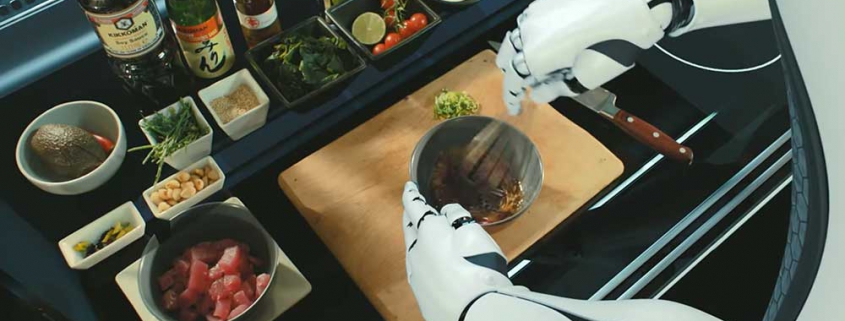
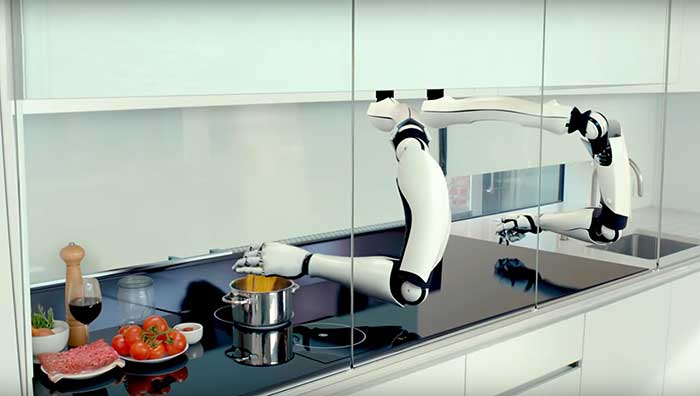
 ©Under
©Under
